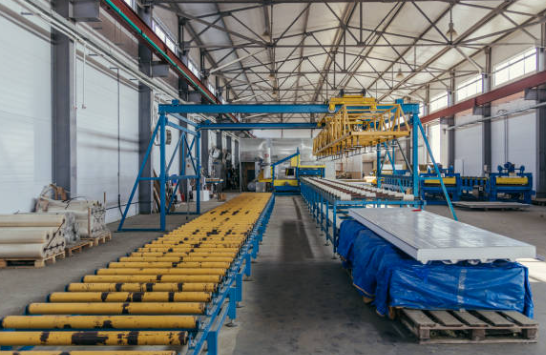Morocco is rapidly evolving as a key player in various industrial sectors, including construction, renewable energy, and infrastructure development. As the country continues to invest in modernization and sustainability, roll forming technology stands out as a crucial manufacturing process capable of meeting the growing demand for high-quality metal components. This blog explores potential innovations in roll forming technology and market opportunities specific to Morocco, with a focus on renewable energy and urban development.
Innovations in Roll Forming Technology
- Automation and Smart Manufacturing:
The integration of Industry 4.0 technologies is transforming roll forming operations. Smart manufacturing processes, including real-time monitoring and predictive maintenance, enhance productivity and reduce downtime. By investing in automated roll forming machines equipped with IoT capabilities, Moroccan manufacturers can improve efficiency and maintain high-quality standards, enabling them to compete in both local and international markets. - Customization and Flexibility:
The ability to produce customized metal profiles is increasingly important in the construction and renewable energy sectors. Innovations in roll forming machinery now allow for quick changes in design and dimensions, enabling manufacturers to adapt to specific project requirements. This flexibility is essential for catering to the diverse needs of Morocco’s urban development projects and energy initiatives. - Use of Advanced Materials:
The exploration of new materials, such as lightweight metals and composite materials, can enhance the performance of roll-formed products. Innovations in metal alloys can lead to stronger, more durable components that are resistant to corrosion, making them ideal for outdoor applications in Morocco’s varied climate. - Sustainable Practices:
With a strong emphasis on sustainability, Moroccan manufacturers are increasingly adopting eco-friendly practices in their roll forming processes. This includes using recycled materials, optimizing energy consumption, and implementing waste reduction strategies. Innovations that enhance sustainability not only benefit the environment but also align with global trends towards greener manufacturing.
Market Opportunities in Renewable Energy
- Solar Energy Infrastructure:
Morocco is a leader in solar energy production, with significant investments in solar farms such as the Noor Ouarzazate Solar Complex. Roll forming technology can play a vital role in producing the structural components for solar panel mounting systems, providing durability and strength while ensuring efficient installation. The demand for solar infrastructure presents a significant market opportunity for roll forming manufacturers. - Wind Energy Projects:
As Morocco aims to increase its renewable energy output, wind energy is becoming increasingly viable. Roll formed products, such as tower components and support structures for wind turbines, are essential in this sector. By supplying high-quality, precise components, roll forming companies can capitalize on the expanding wind energy market. - Energy-Efficient Buildings:
The push for energy-efficient buildings is transforming the construction landscape in Morocco. Roll forming can produce metal framing and cladding systems that enhance insulation and energy efficiency, meeting the requirements of modern building codes. This trend opens up new avenues for collaboration between roll forming manufacturers and construction firms focusing on green building practices.
Urban Development and Infrastructure
- Housing Projects:
With urbanization on the rise, Morocco faces a pressing need for affordable housing solutions. Roll forming technology can be leveraged to create cost-effective and durable metal components for housing projects. By streamlining production processes and reducing material waste, manufacturers can contribute to the development of sustainable urban housing. - Transportation Infrastructure:
As Morocco continues to enhance its transportation networks, the demand for robust metal components for bridges, roads, and rail systems is growing. Roll forming machines can efficiently produce the necessary structural elements, supporting the country’s infrastructure development goals. The increasing investment in transportation infrastructure provides a promising market for roll forming applications. - Industrial and Commercial Developments:
The expansion of industrial zones and commercial facilities in Morocco creates a substantial need for roll-formed products, including roofing panels, wall cladding, and structural supports. Manufacturers can tap into this growing market by offering customized solutions that meet the specific requirements of various industries.
Conclusion
The future of roll forming in Morocco is bright, driven by innovations in technology and a growing demand for sustainable, high-quality metal components. As the country advances its renewable energy initiatives and urban development projects, there are ample opportunities for roll forming manufacturers to establish themselves as key players in these evolving markets. By embracing automation, sustainability, and customization, Moroccan roll forming companies can position themselves for success in both local and global arenas.




